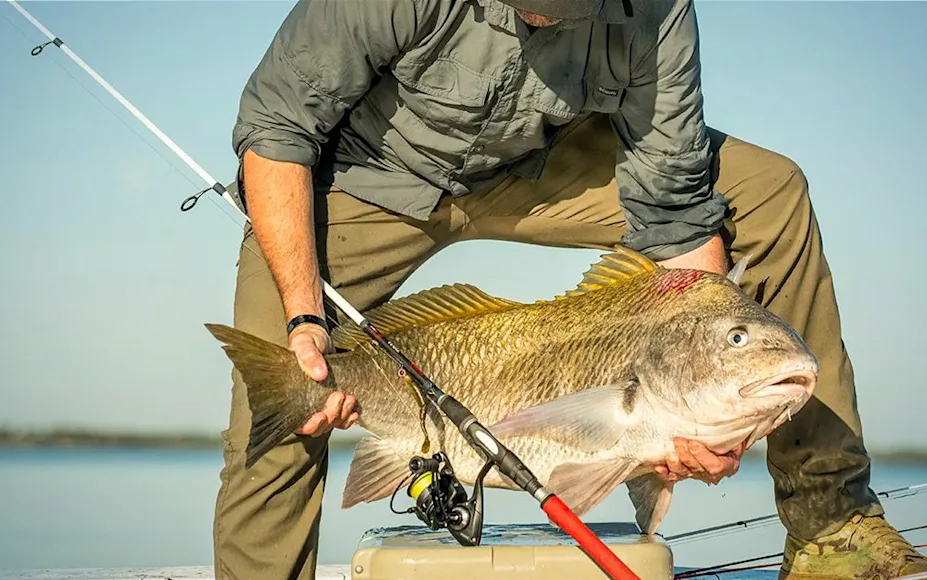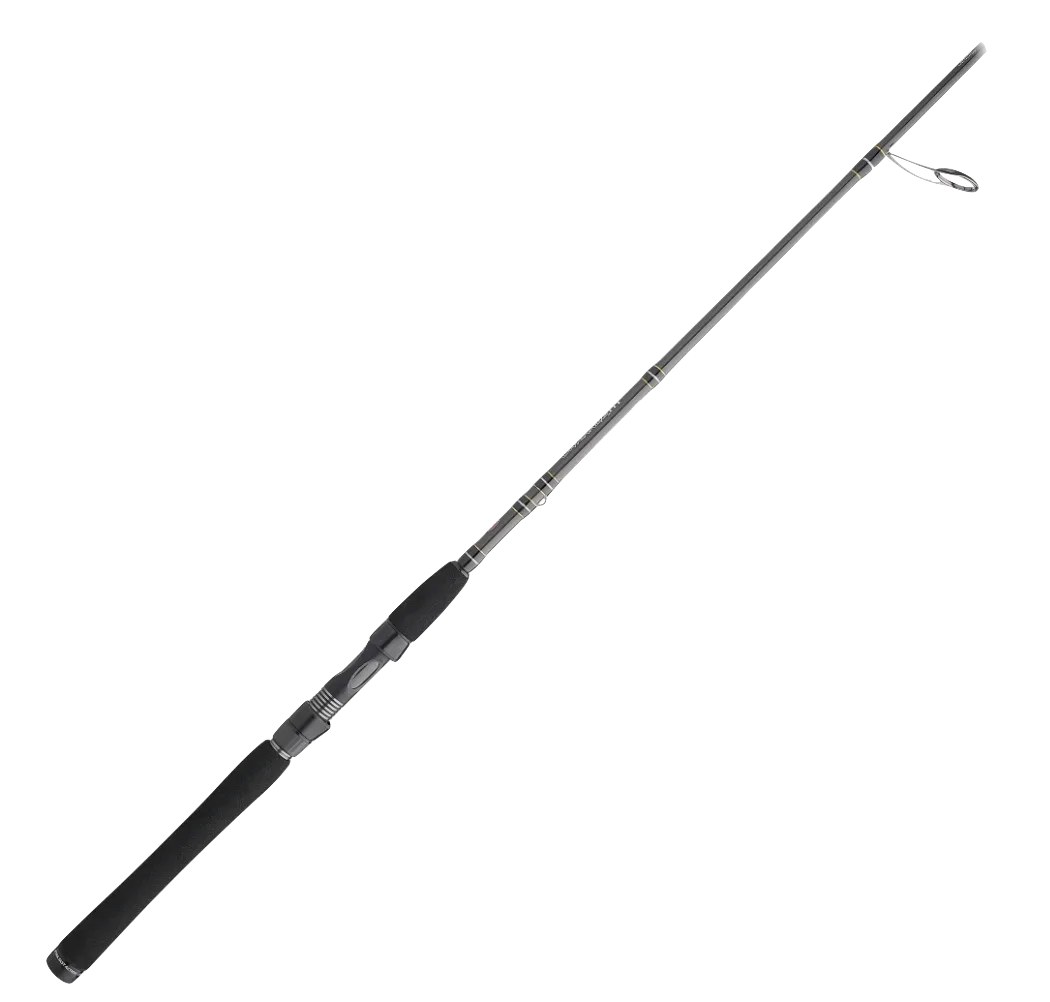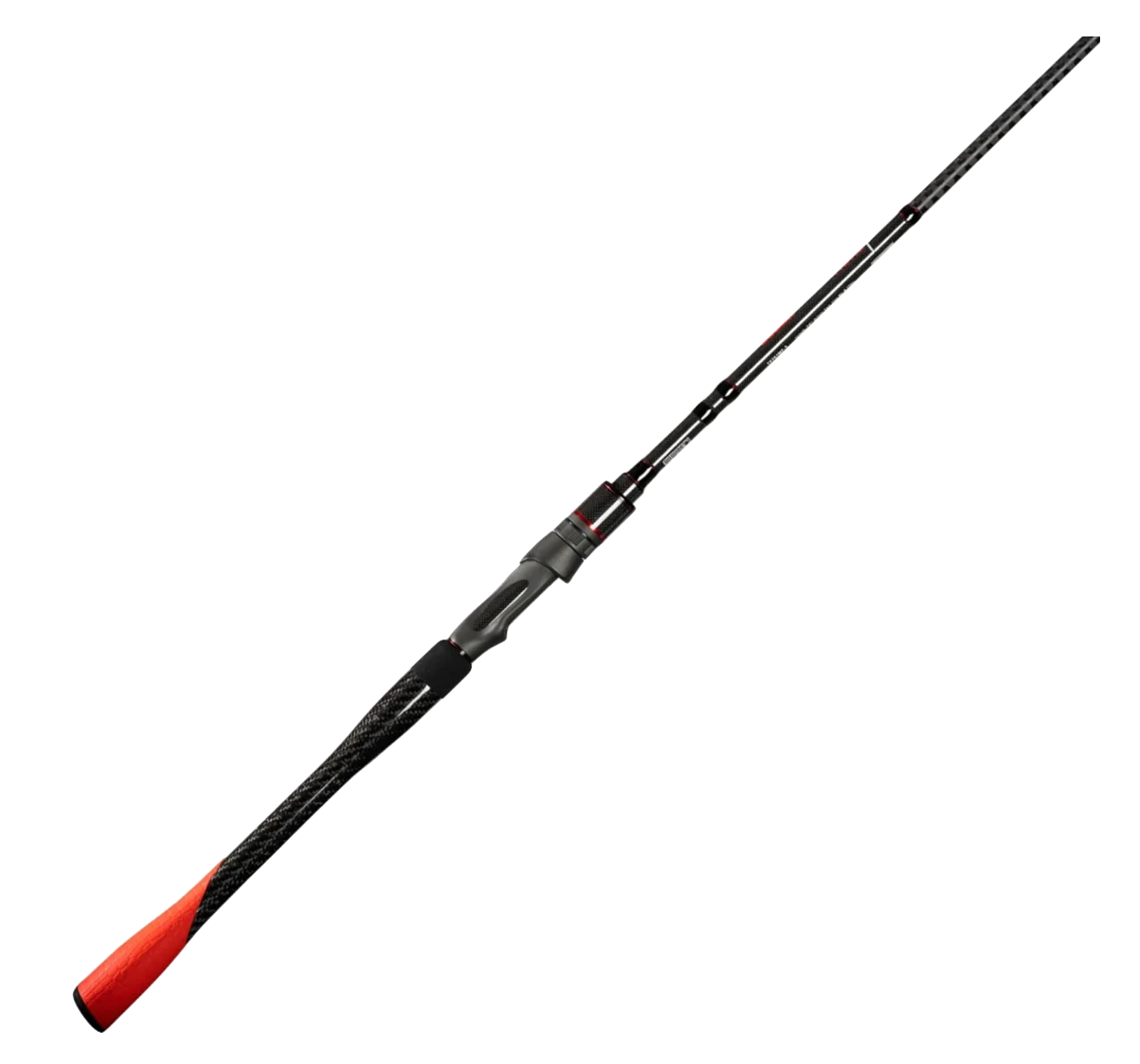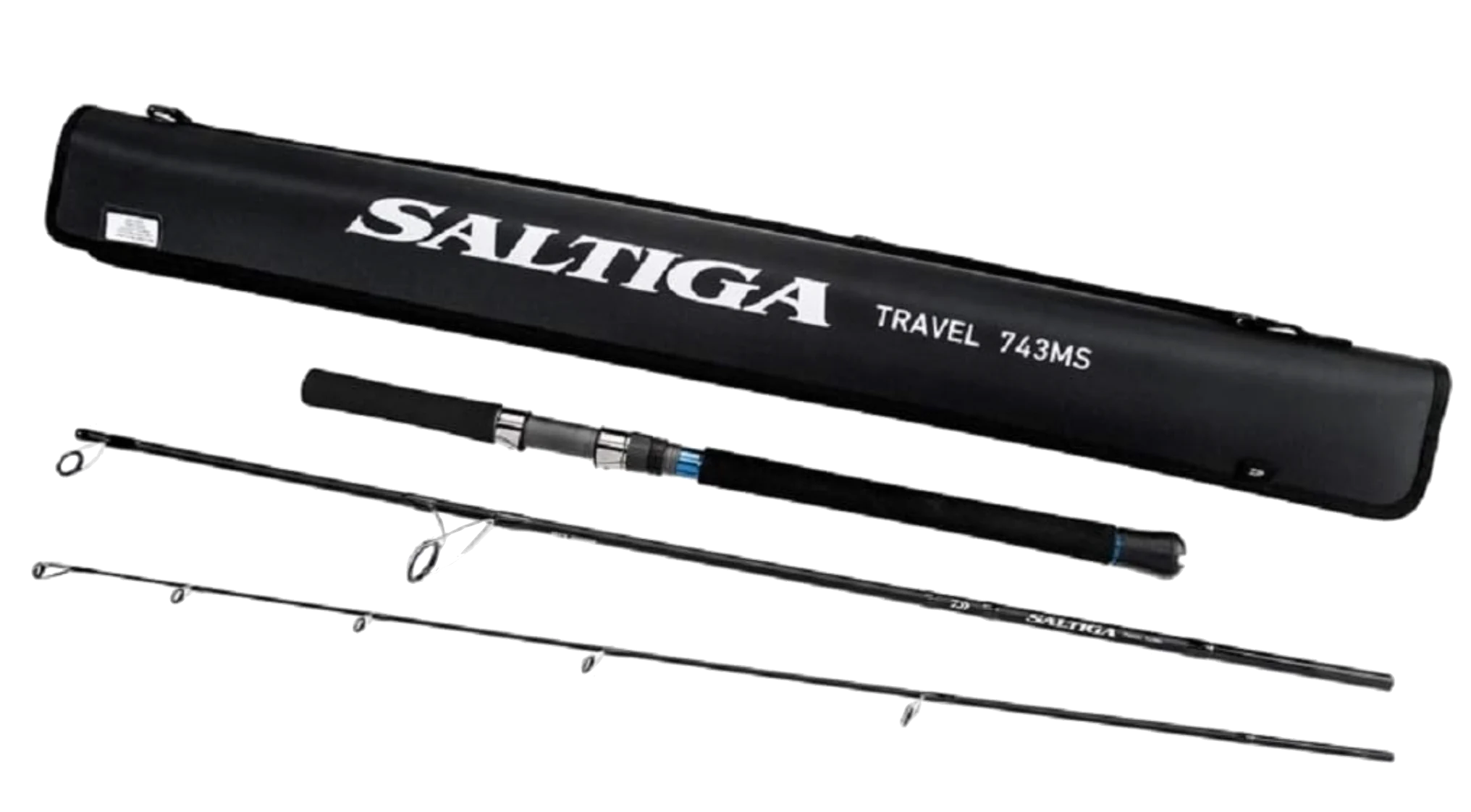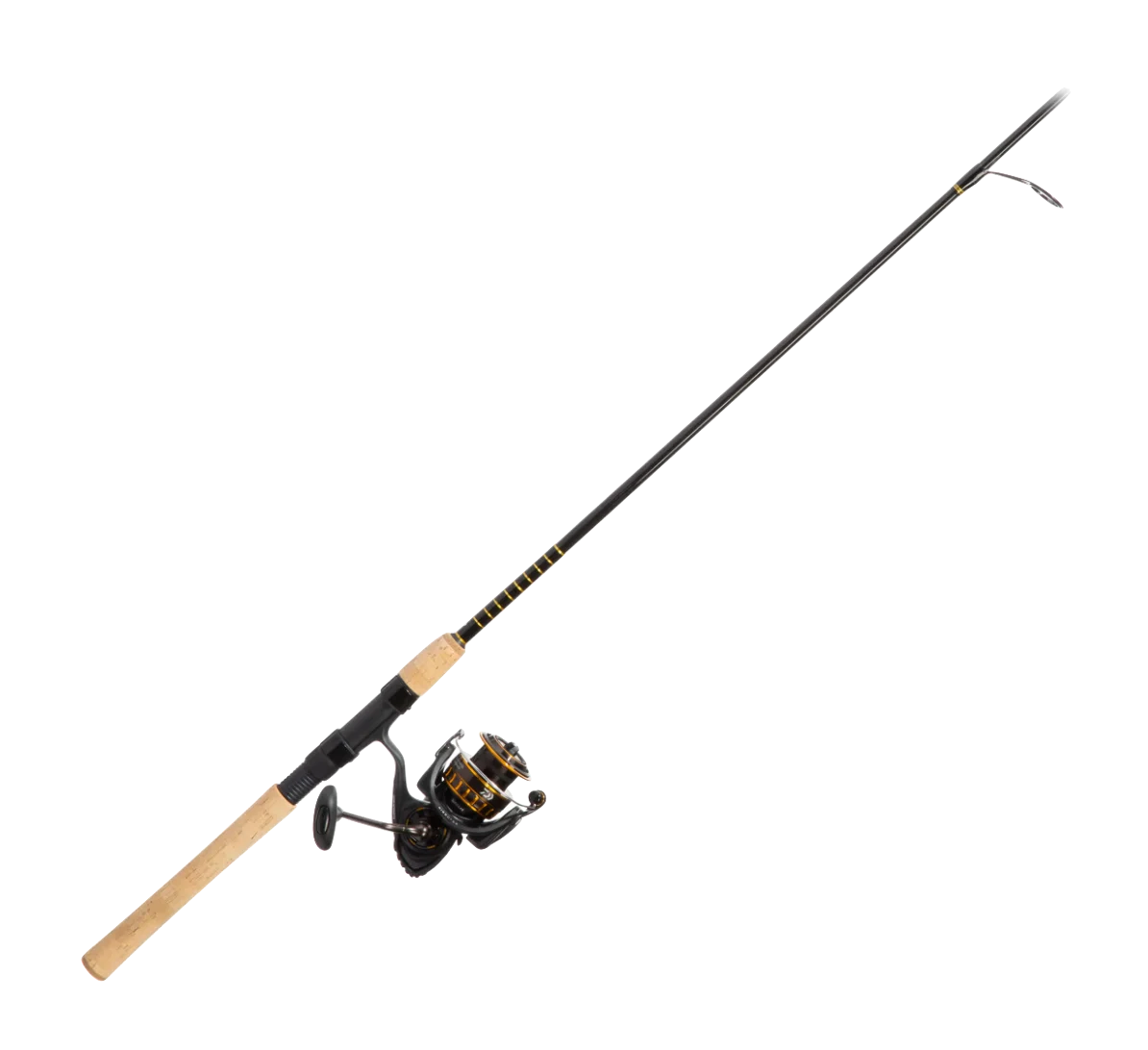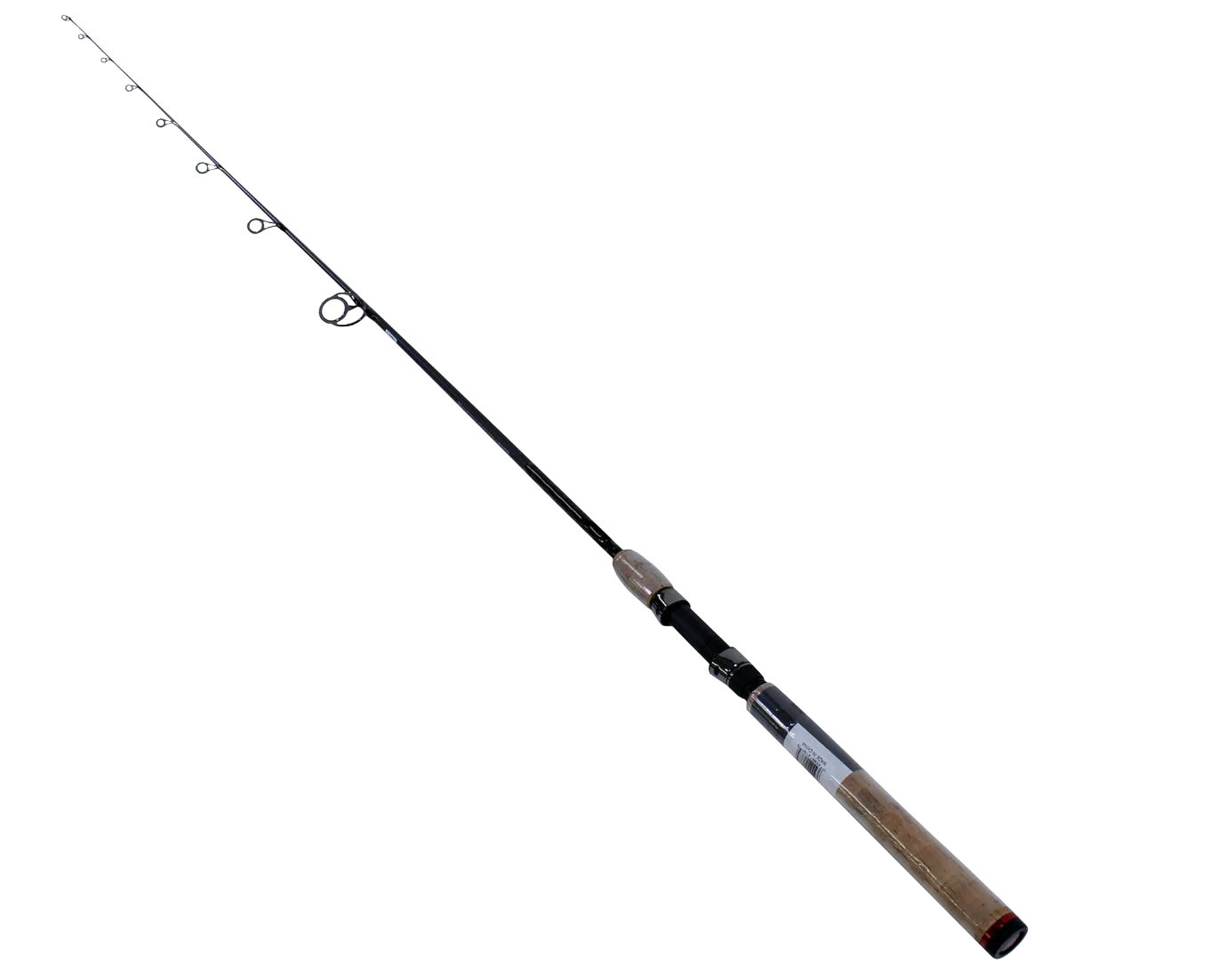We may earn revenue from the products available on this page and participate in affiliate programs. Learn more ›
Today’s inshore spinning rods are built to be lighter, stronger, and more durable than ever before. Many also come at a more affordable price, making them a perfect starting option for anglers who are new to saltwater fishing. With so many options on the market, the only hard part is narrowing them down to find the right spinning rod for your style of fishing. We’ve tested some of the most popular fishing rods made today to help point you in the right direction.
After hours of casting and reeling, we narrowed down the top options based on situation, action, portability, and budget. Whether you plan to target redfish, snook, or something bigger like tarpon, we’ve got the best inshore spinning rods to make sure you’re prepared.
The Best Inshore Spinning Rods
Best Overall: Penn Carnage III Inshore
Best Value: Bubba Tidal Pro Spinning
Best Budget: Ugly Stik Carbon Inshore
Best Two Piece: Daiwa Saltiga Travel
Best Rod & Reel Combo: Daiwa BG Saltwater Combo
Best for Travel: KastKing Blackhawk II Telescoping
Best Under $100: Ugly Stik Inshore Select
Best Overall: Penn Carnage III Inshore
Specs
Lengths: 7’ – 8’
Power: Medium light, medium, medium heavy, heavy, extra heavy
Action: Fast and extra fast
Blank Construction: Graphite/fiberglass
Pros
Heavy-duty reel seat
Excellent guides
Wide range of options
Cons
Price
The Carnage III is a workhorse of a spinning rod and an easy choice for the best overall. I got the chance to test this rod in the saltwater fishing paradise of Costa Rica and came away thoroughly impressed with the comfort and capabilities. This Penn rod has an excellent amount of backbone, which I very much appreciated while battling jack crevalle and yellowfin tuna. Although tuna isn’t an inshore species, it still speaks to the power of this rod. Even the fishing guides on my trip were blown away. I remember one of them commenting, “I want one of my own.”
Penn didn’t skimp on the components and construction of the Carnage. A graphite/fiberglass SLC2 rod blank is standard with Fuji K guides and a machined aluminum reel seat locking things down. As if all that wasn’t enough, this rod is available in a variety of sizes, powers, and actions. There’s something for almost everyone here regardless of fishing style or target species. The only real downside is the heavier options are expensive, but that’s to be expected with this kind of quality build.
Best Value: Bubba Tidal Pro Spinning
Specs
Lengths: 7’ – 7’ 6”
Action: Fast
Power: Medium light, medium, medium heavy
Blank Construction: 30T Toray graphite
Pros
Lightweight
Great sensitivity
Strong reel seat
Cons
Grip scratches easily
This inshore spinning rod has a high price tag, but it’s worth it because Bubba didn’t go cheap with any part of it. The Tidal Pro features an incredibly secure double-locking Fuji reel seat that ensures not even the largest fish can pry your expensive spinning reel loose. Bubba also gave this rod extremely high-quality Fuji K-guides that will resist corrosion better than any other guides out there.
One of our fishing experts, Max Inchausti, has given this rod extensive testing on the water. He especially likes the lightweight design, which is ideal for anyone who plans on casting all day, even with larger plugs and jigs.
Bubba makes excellent grips on all their fishing gear and the Tidal Pro is no exception. The ergonomic carbon fiber handle is fitted with the brand’s signature non-slip grips at the base—perfect for situations where hands get covered in fish slime. The only downside is that the grip can scratch easily, but this is a rod for serious anglers who want to get their money’s worth.
Best Budget: Ugly Stik Carbon Inshore
Specs
Lengths: 6’ 6” – 7’
Actions: Fast and extra fast
Power: Medium light, medium, medium heavy
Blank Construction: Graphite
Pros
Affordable price
Attractive design—looks great
Comfortable-to-hold ergonomic handles
Cons
No heavy power option
Not only is the Ugly Stik Carbon Inshore our favorite saltwater fishing rod, but it also previously won the best saltwater rod category at ICAST. That feat was made even more impressive, considering this rod only costs $100. Our senior editor, Ryan Chelius, found this rod’s single-piece graphite construction gave it a ton of backbone. It also helped deliver some impressively long casts. Throw in some stainless steel guides, and it leaves us wondering how Ugly Stik can afford to sell this rod so cheap.
The only thing we didn’t like about the Carbon is the fact there isn’t a heavy option available. Otherwise, this is a great choice for new and experienced saltwater anglers who want a sensitive rod that won’t break the bank.
Best Two Piece: Daiwa Saltiga Travel
Specs
Length: 6’ 3”
Power: Medium heavy
Action: Fast
Blank Construction: N/A
Pros
Compact
Includes a travel case
Lightweight
Cons
Price tag
Only comes in one size for two-piece
The Daiwa Saltiga is a travel fishing rod built with quality components. Most notable here are the Fuji K guides with FazeLite tangle-free rings. The rod comes in at two pounds, making it lightweight enough for casting all day. What sets this two-piece rod apart from other travel-style rods are the V-joint connections that flex with the blank and prevent problems with the rod pieces twisting or coming apart. Daiwa also includes a travel carrying case. The downside is that the Saltiga only comes in one length. The price tag is also a little high for a travel rod.
Best Rod & Reel Combo: Daiwa BG Saltwater Combo
Specs
Lengths: 7’ – 10’
Action: Fast
Power: Medium light, Medium, Medium heavy
Blank Construction: Graphite
Pros
Affordable
Sensitive
Great drag
Cons
Reel is a little heavy
This is a great rod and reel combo for saltwater anglers of any experience level, whether you’re an experienced fisherman or someone just starting out. The single-piece graphite construction is extremely sensitive, helping anglers detect the lightest of strikes, while the two-piece options are more portable. The options for ergonomics are nice, too. Daiwa offers these rods with either EVA foam or cork grips, depending on each angler’s preferences. For only $159, this is the easiest way to get started inshore fishing. Great for snook, redfish, and more, the BG Saltwater is a good choice for jigging, pitching docks, and bottom fishing.
Best for Travel: KastKing Blackhawk II Telescoping
Specs
Lengths: 7’ 6” and 8’
Action: Fast
Power: Medium heavy, Heavy
Blank Construction: Graphite with a fiberglass tip
Pros
Bargain price
Extremely compact
Surprisingly sensitive
Cons
Durability issues with glass tip
Reports of rod sections locking up
Portability is one of the biggest issues when it comes to inshore spinning rods, but KastKing solves that problem with the Blackhawk II. The popular telescopic rod adjusts down to under 2 feet, making it easy to take anywhere. This is essentially a six-piece rod, but it has an advantage over other multi-piece rods because you don’t need to unrig anything to break it down. Plus, it’s under $60, which is a real bargain considering the graphite reel seat and stainless steel guides. The fiberglass tip helps strengthen the most vulnerable part of the rod. We like it as “beater” rod to keep in a vehicle for those spur-of-the-moment fishing trips.
Best Under $100: Ugly Stik Inshore Select
Specs
Lengths: 7’ – 7’ 6”
Power: Medium light, Medium, Medium heavy
Action: Fast
Blank Construction: Graphite
Pros
Great sensitivity
Excellent price point
Signature Ugly Stik durability
Cons
Some quality control issues
The 7-foot version of the Ugly Stik Inshore Select rod is the best budget-friendly choice we’ve found, and the complete package for inshore fishing. It’s very sensitive yet retains Ugly Stik’s signature toughness. The high quality cork grips are lightweight with a slip-resistant coating, while the stainless steel guides hold up well in the elements. It’s surprisingly strong given the lower price, and it even comes with a seven-year warranty should anything happen while you’re on the water.
How We Evaluated Inshore Spinning Rods
Some picks were inspired by personal experiences using these rods. Other recommendations came from fellow Field & Stream staff members and contributors. Fortunately, we get opportunities for a lot of hands-on testing, and we’ve caught a little of everything from redfish to jack crevalle, and even roosterfish on some of these rods. I weighed the pros and cons of each choice, and carefully considered the following factors whe deciding which rods would make the list:
Materials: Is the rod blank graphite, fiberglass, or a composite of both? What kind of guides and reel seats did the manufacturer use?
Ergonomics: What types of handles and grips does each rod have? Are they easy to grip while hands are slick with fish slime?
Power: Does this rod have the backbone for a larger species like tarpon? Or is it meant for smaller species?
Action: Is this a fast action rod that is good for jigging? Or a moderate action that’s good for working live baits?
Inshore Spinning Rod Buying Guide
When selecting an inshore spinning rod, it’s important to consider the type of angling you’ll be doing. “Inshore” is somewhat of a nebulous term that refers to any type of fishing in depths out to 100 feet. However, some forms of inshore angling are in waters much shallower than that. It is important to think about what species you will be chasing and what conditions that entail. Here are some other considerations:
Multi-Piece Rods
Most inshore spinning rods are in the 6.5’ to 7’ range which provides great backbone and leverage for a variety of species. However, it also makes these rods difficult to transport. Many manufacturers have introduced two and three-piece rods, or even telescopic rods, to solve that problem.
Unfortunately, it also creates a sensitivity issue because one-piece rods deliver more tactile feedback. It’s easier to determine if that tap is a bite or a snag with a one-piece graphite rod than a multi-piece fiberglass one.
Power
Most anglers opt for a medium power or medium-heavy power inshore spinning rod. While some inshore species like redfish can reach weights well over 50 pounds, most fall in the 3 to 8-pound range. Therefore, an extremely heavy rig isn’t always necessary. However, anglers planning to target larger, more aggressive fish like tarpon, should use a medium-heavy to heavy setup. Since tarpon are fierce fighters, a significant backbone is needed in the rod blank.
Action
While often mixed up with power, the rod’s action is different. It refers to how much flex is in the rod. Specifically, a fast action rod will flex more at the tip of the rod. A slow action rod will flex more along the entire length. Fast actions are better for techniques like jigging because they impart more vertical action and vibration to the lure. Slow actions are best for fishing stationary live baits.
A moderate action is a good choice if you’re planning to fish mostly live baits and some artificial lures. Also, consider the casting distance you’ll need and pick an action that’s appropriate to the scenario at hand.
FAQs
Q: Can I use inshore rods for freshwater?
It is possible to use inshore rods for freshwater fishing. Although some saltwater rods are a little too heavy for freshwater species unless you’re targeting something like pike, muskie, or sturgeon. Freshwater rods can also be used in saltwater, although the components are often not as rugged and prone to the corrosive effects of salt. Always be sure to rinse your rod with freshwater after using it in the salt.
Q: Are extra fast rods good for inshore fishing?
If you plan to work a vertical jig, an extra fast rod will work for inshore fishing. They are also a good fit if fish aren’t being overly aggressive. On subtle bites, extra sensitivity is needed, and an extra fast action will help deliver that. Although, an extra fast action is not a great choice where extra casting distance might be needed.
Q: What type of rod is best for inshore fishing?
This is a highly subjective question, but a quality graphite spinning rod will work for most inshore scenarios. A medium to medium-heavy power rod will suffice for redfish, flounder, snapper, snook, and more. A heavy power rod usually isn’t necessary except for scenarios with larger, more aggressive fish like tarpon.
Q: What is the best inshore spinning rod?
The Penn Carnage III proved its worth to us more than once, and it’s the perfect balance of features combined with price. It’s a great overall rod for the angler who isn’t sure what to buy for their next saltwater adventure. Although one can’t really go wrong with any of the other options on this list.
Why Trust Us
For more than 125 years, Field & Stream has been providing readers with honest and authentic coverage of outdoor gear. Our writers and editors eat, sleep, and breathe the outdoors, and that passion comes through in our product reviews. You can count on F&S to keep you up to date on the best new gear. And when we write about a product—whether it’s a bass lure or a backpack—we cover the good and the bad, so you know exactly what to expect before you decide to make a purchase.

